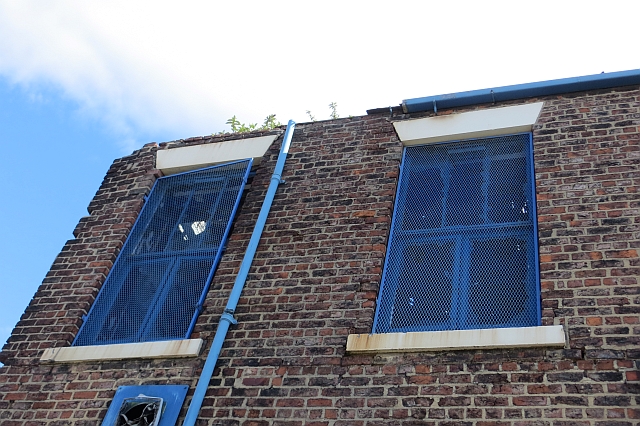Locomotive for the Londonderry and Lough Swilly Railway
-
Description
An image of one of two tank engines ordered in September 1909 for the Londonderry and Lough Swilly Railway (TWAM ref. DS.RSH/1/1/3). Engine nos. 2801-2802. Built for: Londonderry and Lough Swilly Railway. Date ordered 7 September 1909. Gauge of Railway: 3 feet. Principal Dimensions. Cylinders dia: 14½ inches. Cylinders stroke: 22 inches. Wheels (Dia. of coupled): 3 feet 9 inches. Wheel-base - total: 23 feet 6 inches. Water capacity: 1300 gallons. Fuel capacity: 75 cubic feet = 1.7 tons. Heating surface – total: 803 square feet. Grate area: 11.5 square feet. Working pressure: 175 lbs per square inch. Total weight in working order: 41.75 tons. Tractive force taking 90% of the working pressure: 16189 lbs. Tractive force taking 75% of the working pressure: 13491 lbs. Approximate shipping space: 3890 cubic feet. Approximate gross weight packed for shipment: 36.18 tons. Code Word: LOUGH This album celebrates the achievements of the Hawthorn Leslie locomotive works at Forth Banks, Newcastle upon Tyne. The works were established by Robert Hawthorn in January 1817 and in 1820 his brother, William Hawthorn joined him as a partner. The firm initially manufactured stationary engines but within a few years diversified into marine engineering and in 1831 produced its first locomotive engine for the Stockton and Darlington Railway. In 1870 the firm established a separate marine engine works on the River Tyne at St. Peter’s and from 1882 the Forth Banks Works became devoted entirely to the manufacture of locomotives. In 1885 the firm amalgamated with the shipyard of Andrew Leslie at Hebburn, creating the world-famous shipbuilding and engineering company R and W. Hawthorn, Leslie & Co. Ltd. The Forth Banks Works of Hawthorn Leslie produced engines of all types and sizes for railways around the world. The output of the Forth Banks Works included a large number of tank engines for industrial works and collieries and the firm established a speciality in the construction of crane locomotives. The images in this set date from the early twentieth century and are a reminder of Newcastle upon Tyne’s proud industrial heritage. They are taken from a series of photograph albums produced by Hawthorn Leslie. The albums were kindly donated to Tyne & Wear Archives by Alan C. Baker and T.D. Allen Civil. (Copyright) We're happy for you to share this digital image within the spirit of The Commons. Please cite 'Tyne & Wear Archives & Museums' when reusing. Certain restrictions on high quality reproductions and commercial use of the original physical version apply though; if you're unsure please email archives@twmuseums.org.uk. -
Owner
Tyne & Wear Archives & Museums -
Source
TWAM (Flickr) -
License
What does this mean? No known copyright restrictions -
Further information
Link: https://www.flickr.com/photos/29295370@N07/25609568311/
Resource type: Image
Added by: Simon Cotterill
Last modified: 8 years, 5 months ago
Viewed: 1018 times
Picture Taken: Unknown -
Co-Curate tags










